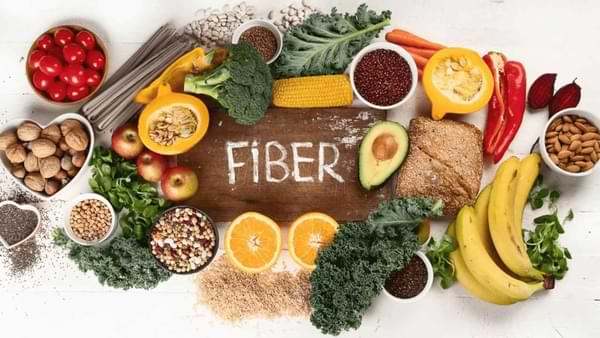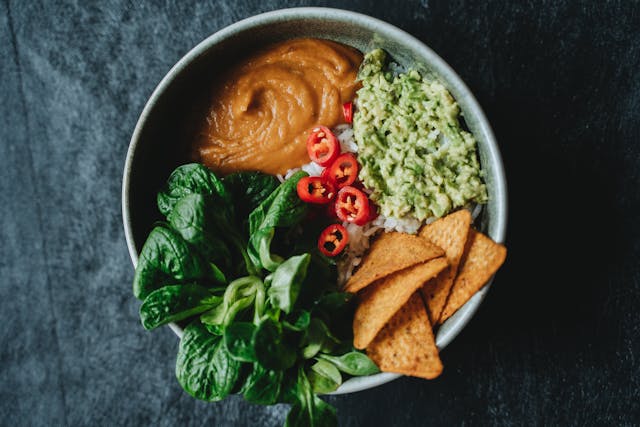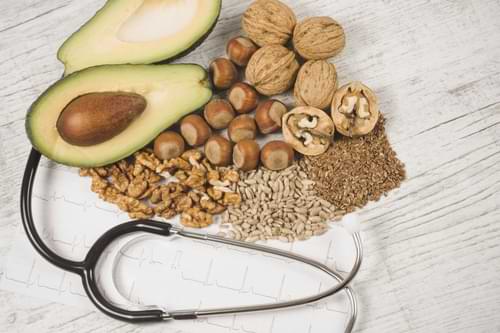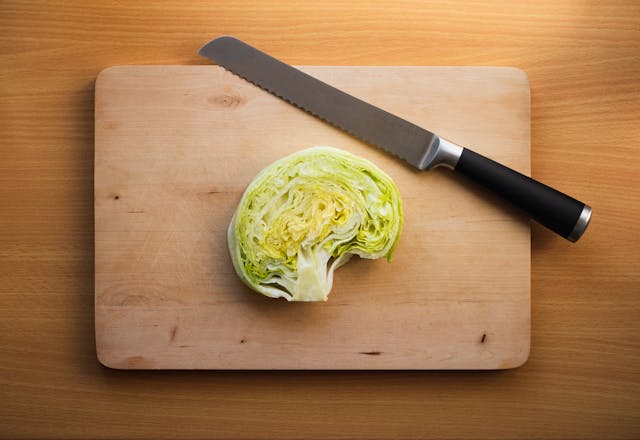In recent years, plant-based diets have gained immense popularity, not only for their environmental and ethical benefits but also for their positive impact on overall health. A significant factor in the health benefits of a plant-based diet is its high fiber content. Fiber, a type of carbohydrate found in plants, plays a crucial role in maintaining digestive health, supporting weight management, and reducing the risk of chronic diseases like heart disease, diabetes, and cancer.
1. What is Fiber?
Fiber is a type of carbohydrate that the body cannot fully digest. Unlike sugars and starches, which are broken down by digestive enzymes into glucose, fiber passes through the digestive system largely intact. This characteristic is what makes fiber so beneficial to health, particularly for digestion and preventing chronic diseases.
Types of Fiber
There are two main types of dietary fiber: soluble fiber and insoluble fiber. Both types are essential for health, and plant-based diets typically provide a balance of the two.
2. Types of Fiber
Soluble Fiber
Soluble fiber dissolves in water, forming a gel-like substance in the digestive tract. This type of fiber helps slow digestion, which can regulate blood sugar levels and lower cholesterol. It also promotes a feeling of fullness, making it a useful tool for weight management.
Sources of Soluble Fiber:
- Oats
- Barley
- Beans
- Lentils
- Apples
- Citrus fruits
- Carrots
Insoluble Fiber
Insoluble fiber does not dissolve in water and remains intact as it moves through the digestive system. It adds bulk to stool, helping to prevent constipation and promote regular bowel movements. Insoluble fiber also plays a role in preventing certain digestive disorders like diverticulitis and hemorrhoids.
Sources of Insoluble Fiber:
- Whole grains (wheat, brown rice)
- Nuts and seeds
- Vegetables (broccoli, cauliflower)
- Fruits with skin (apples, pears)
- Legumes (chickpeas, kidney beans)
3. The Importance of Fiber in a Plant-Based Diet
One of the key benefits of following a plant-based diet is the naturally high intake of fiber. Plant-based foods, such as vegetables, fruits, legumes, nuts, seeds, and whole grains, are all excellent sources of fiber. Unlike animal-based products, which contain zero fiber, plant-based foods provide a rich and diverse range of both soluble and insoluble fibers.
Key Reasons Why Fiber is Crucial in a Plant-Based Diet:
- Promotes Gut Health: Fiber acts as a prebiotic, feeding the beneficial bacteria in your gut. This helps maintain a healthy gut microbiome, which is essential for overall health.
- Weight Management: Fiber helps you feel full and satisfied after meals, reducing overeating and aiding in weight control.
- Disease Prevention: High-fiber diets have been shown to reduce the risk of chronic diseases, including heart disease, diabetes, and certain types of cancer.
4. Top High-Fiber Plant-Based Foods
Legumes
Legumes are among the highest sources of fiber in a plant-based diet. Beans, lentils, chickpeas, and peas provide both soluble and insoluble fiber, making them a perfect addition to any meal.
- Black Beans: 15g of fiber per cup
- Lentils: 16g of fiber per cup
- Chickpeas: 12g of fiber per cup
Whole Grains
Whole grains are another excellent source of fiber. They provide complex carbohydrates and fiber, helping with sustained energy and digestive health.
- Oats: 8g of fiber per cup (cooked)
- Brown Rice: 3.5g of fiber per cup (cooked)
- Quinoa: 5g of fiber per cup (cooked)
- Barley: 6g of fiber per cup (cooked)
Vegetables
Vegetables are an essential part of any plant-based diet, providing a wide range of vitamins, minerals, and, of course, fiber. Incorporating a variety of vegetables ensures you get both soluble and insoluble fiber.
- Broccoli: 5g of fiber per cup (cooked)
- Carrots: 4g of fiber per cup (cooked)
- Brussels Sprouts: 4g of fiber per cup (cooked)
- Sweet Potatoes: 6g of fiber per medium potato (with skin)
Fruits
Fruits provide natural sweetness along with high fiber content, especially when eaten with the skin on.
- Apples: 4g of fiber per medium apple (with skin)
- Pears: 6g of fiber per medium pear (with skin)
- Berries: 8g of fiber per cup (raspberries)
- Bananas: 3g of fiber per medium banana
Nuts and Seeds
Nuts and seeds are fiber-rich, along with being good sources of healthy fats and protein. Adding them to salads, smoothies, or snacks boosts your fiber intake.
- Almonds: 4g of fiber per ¼ cup
- Chia Seeds: 10g of fiber per ounce (2 tablespoons)
- Flaxseeds: 7g of fiber per 2 tablespoons
Also check: Plant-Based Diet for Diabetes Management
5. How Fiber Promotes Digestive Health
Fiber is crucial for maintaining a healthy digestive system. It helps in several key ways:
Prevents Constipation
Both soluble and insoluble fibers play a role in adding bulk to stools and making them easier to pass. This prevents constipation and promotes regular bowel movements.
Supports Gut Bacteria
Fiber, particularly soluble fiber, acts as a prebiotic, feeding the beneficial bacteria in your gut. A healthy gut microbiome is linked to improved digestion, better nutrient absorption, and a stronger immune system.
Reduces Risk of Digestive Disorders
High-fiber diets have been shown to lower the risk of various digestive disorders, including diverticulitis, irritable bowel syndrome (IBS), and hemorrhoids. The bulk created by insoluble fiber helps prevent pressure in the colon, reducing the likelihood of developing these conditions.
6. The Role of Fiber in Weight Management
One of the most notable benefits of a high-fiber plant-based diet is its role in weight management.
Promotes Satiety
Fiber-rich foods take longer to digest, helping you feel full for longer periods. This reduces the likelihood of overeating or snacking between meals, making it easier to maintain a healthy weight.
Regulates Blood Sugar Levels
Soluble fiber slows down the absorption of sugar in the bloodstream, preventing rapid spikes and crashes in blood sugar levels. This not only supports sustained energy levels but also reduces cravings for sugary and unhealthy foods.
Reduces Caloric Intake
Because fiber-rich foods are more filling, they naturally reduce the amount of food (and calories) you consume. Additionally, many fiber-rich foods are low in calories, making them an ideal choice for weight management.
Also check: Superfoods in a Plant-Based Diet
7. Fiber and Chronic Disease Prevention
Heart Disease
A high-fiber diet has been shown to lower the risk of heart disease by reducing cholesterol levels. Soluble fiber binds to cholesterol in the digestive system and helps remove it from the body. This reduces LDL (“bad”) cholesterol, which is a major contributor to heart disease.
Key Plant-Based Foods for Heart Health:
- Oats
- Beans
- Lentils
- Barley
Type 2 Diabetes
Fiber helps regulate blood sugar levels by slowing the absorption of sugar in the bloodstream. Studies have shown that people who consume high amounts of fiber, especially from whole grains, fruits, and vegetables, have a reduced risk of developing type 2 diabetes.
Best High-Fiber Foods for Diabetes Prevention:
- Whole grains (quinoa, oats, barley)
- Fruits with skin (apples, pears)
- Non-starchy vegetables (broccoli, spinach)
Cancer Prevention
A high intake of fiber, especially from fruits, vegetables, and whole grains, has been associated with a reduced risk of certain types of cancer, particularly colorectal cancer. Fiber helps move waste through the digestive system more efficiently, reducing the exposure of the colon to carcinogens.
Top Fiber-Rich Foods for Cancer Prevention:
- Cruciferous vegetables (broccoli, Brussels sprouts)
- Berries (blueberries, raspberries)
- Legumes (lentils, chickpeas)
8. How to Incorporate More Fiber into Your Diet
Incorporating more fiber into your diet doesn’t have to be complicated. Here are some simple tips to boost your fiber intake:
- Start Your Day with Fiber: Choose high-fiber breakfast options like oatmeal or a smoothie packed with fiber-rich ingredients such as chia seeds, flaxseeds, and berries. Oatmeal, made with whole oats and topped with nuts and fruits, is a fantastic way to start your day with a fiber boost.
- Add Legumes to Your Meals: Incorporate beans, lentils, or chickpeas into soups, salads, and main dishes. Legumes are an excellent source of both soluble and insoluble fiber, and they’re versatile enough to be used in many different cuisines.
- Choose Whole Grains: Replace refined grains (white bread, white rice, pasta) with whole grains such as quinoa, brown rice, barley, and whole wheat products. Whole grains are rich in fiber and provide more nutrients than their refined counterparts.
- Snack on Fruits and Veggies: Swap processed snacks with fiber-rich options like carrot sticks, apple slices (with skin), or a handful of nuts. Eating fruits and vegetables with their skins intact provides additional fiber.
- Add Seeds and Nuts: Chia seeds, flaxseeds, and almonds can be added to smoothies, oatmeal, salads, or yogurt for a fiber-rich snack or meal.
- Include Fiber with Every Meal: Aim to include some source of fiber with each meal. Whether it’s a side of steamed vegetables, a piece of fruit, or a serving of whole grains, this will help you meet your daily fiber needs.
9. Potential Challenges of a High-Fiber Diet
While a high-fiber diet offers numerous health benefits, there are some challenges to consider, especially if you’re new to eating large amounts of fiber.
1. Gas and Bloating:
Introducing a lot of fiber quickly into your diet can lead to temporary digestive discomfort, including gas and bloating. This happens because fiber is fermented by bacteria in the colon, producing gas. To avoid this, it’s essential to increase fiber intake gradually and drink plenty of water.
2. Sudden Changes in Digestion:
A rapid increase in fiber intake can cause irregular bowel movements. Starting slowly and incorporating fiber gradually allows your digestive system to adjust over time.
3. Dehydration:
Fiber absorbs water in the digestive system, so if you’re not drinking enough fluids, you may experience constipation or discomfort. Ensure you stay hydrated by drinking water consistently throughout the day, especially when increasing your fiber intake.
4. Nutrient Absorption:
While fiber is beneficial, excessive intake may interfere with the absorption of certain nutrients, such as iron and calcium. It’s essential to balance your fiber-rich diet with other nutrient-dense foods to ensure you’re meeting all your nutritional needs.
10. Final Thoughts on Fiber in a Plant-Based Diet
A plant-based diet naturally provides a high intake of fiber, which is essential for digestive health, weight management, and chronic disease prevention. By focusing on whole foods like legumes, whole grains, vegetables, fruits, and nuts, you can easily meet your daily fiber needs while reaping the numerous health benefits associated with a fiber-rich diet.
Key Takeaways:
- Fiber plays a critical role in maintaining gut health, preventing constipation, and promoting regular bowel movements.
- It helps in weight management by promoting satiety and reducing calorie intake.
- A high-fiber diet has been linked to a reduced risk of chronic diseases, including heart disease, type 2 diabetes, and certain cancers.
- Incorporating a variety of high-fiber foods into your diet, such as legumes, whole grains, fruits, vegetables, and seeds, is the best way to meet your fiber needs.
- Start slowly if you’re new to a high-fiber diet to avoid digestive discomfort, and remember to stay hydrated.
Incorporating fiber-rich foods into a plant-based diet is one of the best steps you can take toward a healthier lifestyle. Not only does it support your digestive system, but it also helps in weight management and protects against several chronic diseases. With so many delicious and fiber-rich plant-based foods available, it’s easy and enjoyable to make fiber an essential part of your everyday meals.
By following a balanced, fiber-rich plant-based diet, you’ll experience the benefits of improved digestion, better weight control, and a reduced risk of long-term health issues, all while enjoying a variety of nutritious and flavorful meals.






